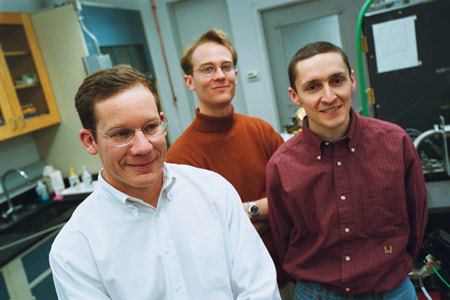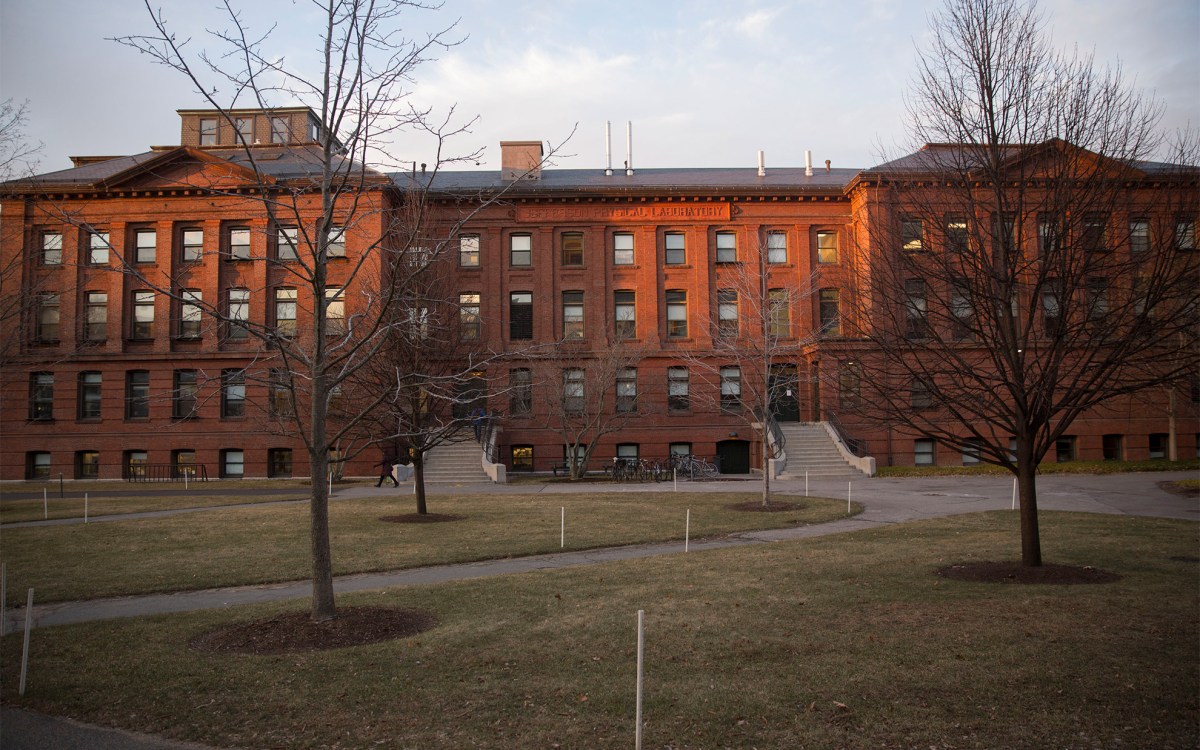Small things promise big results
New advance in nanotechnology

It’s one of the smallest things ever made but it promises to revolutionize some of the most important technologies in our lives. It’s a wire as thin as 15 atoms that can make light by itself and behave as a complete electronic device. Such capabilities could lead to new ways to compute, communicate, encode, detect, and identify.
Under the most powerful microscopes, these wires resemble striped poles. Bands of semiconductors that contribute electrons alternate with bands that control the flow of electricity or the emission of a single photon of light. That kind of structure hints at more compact, faster, more energy-efficient computers, and at circuits holding codes virtually impossible to crack. The striped wires might also detect markers for prostate and breast cancer, or quickly detect viruses released by bioterrorists.
“These nanowires enable us to combine materials we could never combine before,” says Charles Lieber, Hyman Professor of Chemistry and leader of a Harvard University group that has pioneered the making of nanodevices. The size of such devices is measured in billionths of a meter; a thickness of one nanometer equals about 10 atoms; 50 nanometers are roughly the size of a virus.
“The new combinations give us unique handles we can grab to organize matter into different structures that enable us to perform functions out of reach before,” Lieber continues. “There are so many potential uses for this technology that we feel like kids in a candy shop.”
Little is big
Nanotechnology is arriving just in time to solve an aging problem in microtechology, which features devices made in dimensions of millionths of meters. (A human hair is 50-100 micrometers thin.) By improving techniques for making micro switches, rectifiers, and other circuit elements smaller and smaller, manufactures have been doubling the number of elements they can crowd onto a thumbnail-size microchip every 18 months for almost 40 years. The Pentium IV chip in many new desktop computers holds 42 million elements. Such downsizing has decreased the size and cost while improving the efficiency of everything from CD players to supercomputers.
But there’s a physical limit to how small you can make a switch or transistor and still have it work reliably. Microelectronics is approaching that limit. Nanotechnology waits in the wings for its time on stage, and representatives of industry crowd into the audience.
With the aplomb of a nanotechie, Lieber smiles at the clumsiness of microchips. Using nanowires and nanotubes whose diameters are measured in atoms and molecules, rather than hair widths, he expects to put billions rather than millions of elements on a chip.
And that’s just with wires and elements each made of only one kind of material – a metal, semiconductor, or carbon. The possibility of fabricating wires of alternating bands of semiconductors has Lieber thinking about chips with hundreds of billions, even a trillion, elements sitting comfortably on a chip smaller than a half-inch on a side.
That’s not going to happen anytime soon. Industry has hundreds of billions of dollars invested in microchip-making equipment. But it is going to happen. Intel and other chip companies are keeping close track of what’s going on in Lieber’s lab and in other university labs.
Lighting the way
This attention stems not just from the potential for smaller, more powerful computers. It’s not even because of the very real possibility of eliminating the need for hard disks because chips crowded with nanodevices will store all the data needed to do the tasks you want to do. It’s the unique things people will be able to do that they can’t do now. “With nanotechnology, you can get fundamentally new properties that you can’t even conceive of when you’re just scaling down conventional materials,” Lieber notes.
He also points out that his lab is not the only place where striped nanowires have been fabricated. Researchers at the University of California, Berkeley, and Lund University in Sweden reported on making such devices in science journals published this month.
These nanowires can be made in any pattern. The bands can be customized to emit an identifying signature of light when an ultraviolet scanner shines on them. Such signatures could be embedded into valuable cloths, jewelry, or papers, or they could be used to track drugs or explosives. Companies have already contacted Lieber about commercializing nanowire fingerprints.
But Lieber is interested in grander applications. Exciting a patterned wire with a tiny electric pulse can trigger the emission of single photons, the smallest particles of light. This gets people thinking about optical circuits and switches because light operates much faster than electricity. Light could also be a path to quantum computing, one of the loftiest goals in technology.
In quantum computers, all the switches that control bits of information can be on and off at the same time, a possibility that fits with the fact that light can take the form of a wave or photon particle at the same time. Such weirdness might be employed to build faster machines that solve different parts of a complex scientific or business problem simultaneously.
Production of single photons could also be used for so-called quantum communications, which would provide the ultimate in security, allowing sensitive communications to be concealed in unbreakable codes.
Virus detectors
Nanowires also might be used for detection of viruses and proteins involved in disease. All viruses carry a slight electric charge, which could be detected when they bind electrically to the surface of a nanowire. The bound virus then acts like a switch, turning the nanodevice on or off. “It’s the only technique I know of that can detect a single virus in real time,” Lieber notes. Naturally occurring viruses like Ebola or those introduced by terrorists could be pinpointed without time-consuming blood analyses.
Proteins and DNA molecules also carry a charge that could be sensed by nanoswitches. If a protein electrically sticks to a nanowire, it can “close” the switch and reveal its presence by a change in electrical conductivity. Lieber and his colleagues are working on making such a detector for prostate specific antigen, a marker for prostate cancer. Such markers also exist for other malignancies including breast and ovarian cancer, and these, too, might be quickly identified by a nanosensor that might be used at home.
These kinds of applications generate great enthusiasm among students and research assistants in Lieber’s lab, including research assistant Mark Gudiksen, lead author of a report on striped nanowire devices published in the Feb. 7 issue of Nature.
“There’s a sense of real excitement in our lab,” Lieber says. “Students work on projects at all hours of the day and night. There’s the feeling that we are always on the verge of a true breakthrough.”
For the proverb saith that many small make a great .
– Chaucer




